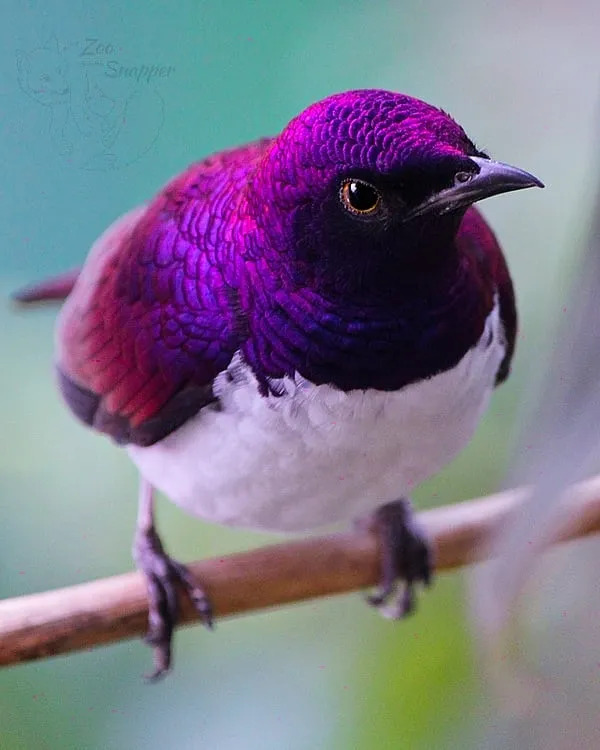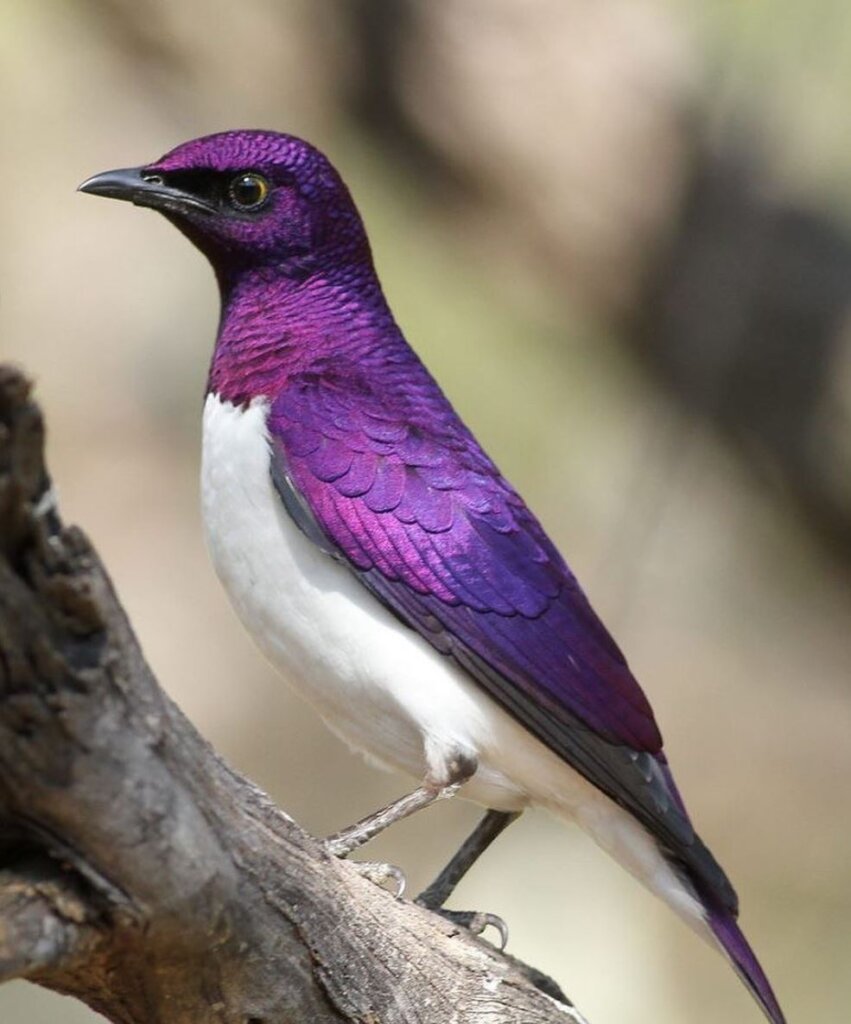The Violet-Backed Starling is by all means an absolutely remarkable bird. Its captivating violet shimmer is simply breathtaking and definitely worth stopping to admire!

This particular bird is quite petite, measuring about six inches in length and weighing approximately one ounce. Interestingly, it is only the male counterpart that flaunts a unique feature of having a pristine white chest paired with a captivating iridescent violet-colored back, which distinguishes it from other members of its species.

The Violet-Backed Starling species is commonly found across various regions of Sub-Saharan Africa. They tend to avoid residing in the thick rainforests of the Congo Basin.

Violet-backed starlings are often spotted in wooded areas and the edges of forests, as well as in open woodlands and clearings. These charming birds have a diet focused mainly on seeds, fruits, berries, and various types of small insects, which they primarily find among the tree canopy.

The Violet-Backed Starling is primarily a bird that migrates, although there are certain regions where these birds choose to settle and remain year-round.

Typically, a female bird chooses to construct her nest at a height of approximately two meters above the ground, commonly opting for the snug spot in the crevice of a tree. To craft her cozy dwelling, she creatively combines vibrant foliage and organic materials, such as animal dung.

Afterwards, she nurtures a batch of approximately two to four eggs in an incubation period lasting between 12 to 14 days. These eggs possess a distinct blue hue, accentuated by reddish and brown speckles.

Fortunately, the female doesn’t bear the sole responsibility of caring for her offspring, as the male also contributes in providing nourishment to the young ones until they mature fully, which typically takes around 21 days.
In the natural world, patterns of coloration serve as a crucial aspect of sexual selection, influencing communication both within and between species.

The members of this species exude stark contrasts between the genders! The male proudly displays his vibrant violet attire, while the female effortlessly blends into her surroundings, making her much more challenging to detect.

The contrast between the vibrant violet back of the male and his pristine white belly is truly remarkable. On the other hand, the females and the young ones of this particular species possess bellies adorned with beautiful streaks of brown and white. In fact, they appear quite similar to a thrush in their appearance.

Nevertheless, they all possess the unique characteristic of a black beak and bright yellow-colored eyes.

Female and juvenile birds exhibit a delightful combination of brown hues on their heads and backs, contrasted with a charmingly speckled white belly. It is worth noting that both male and female specimens boast beaks and legs painted in a refined shade of black, albeit in a less prominent and showy manner than their male Starling counterparts.

